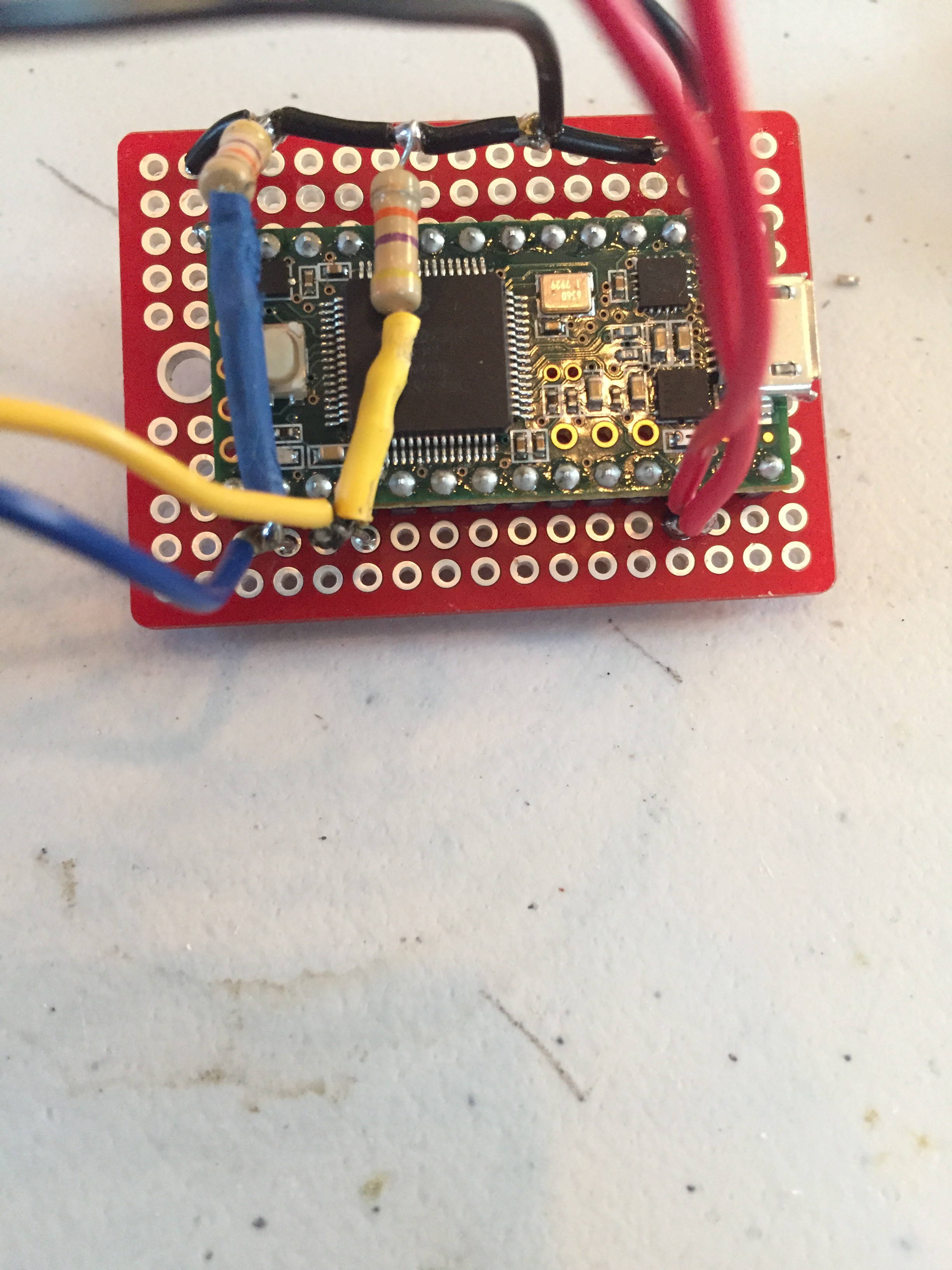Once I had the design aspect of this piece done, it was time to start thinking about the musical aspect and creating sound. After seeing how the chains looked on the body and interacted with the body, I decided the best way to play this instrument would be with pressure sensors. This way the prism corners would push into the sensors as the person moves their shoulders in an irritated manner, or from another person pushing them in confrontation, and the prosthetic will create sound. I did a lot of research as to which sensors to use, and I decided on the Tescan Flexi Force one-pound sensor. I ordered them and hooked them up to my Arduino and they worked great.

I have some experience with Max MSP, and more experience with Arduino, but I wasn’t sure ultimately how to merge the two together in order to create something that reports back real time data into music. I asked a software mentor, Kristina Warren, about what the best way to go about this was and she suggested I use a Teensy Arduino, because they work best with Max MSP. She also gave me a starter match patch that I based my final software patch off of. I ended up finding and using some code which was filtered from Daniel Jolliffe and Thomas Ouellet Fredericks, and this code allows the Teensy to send its values into Max. I then used the Max patch Kristina had gotten me set up with to try and read the values from the Teensy. I had a lot of trouble being able to access the Teensy data in Max.
I spent hours and hours trying to trouble shoot and simply could not find the Teensy serial port in Max. I could read the data just fine on the Teensy, but I couldn’t get it to transfer over to Max. After a lot of frustration, deep breaths, and internet searching, I found a really helpful website which helped me understand the inner workings of what I was looking at. (http://little-scale.blogspot.com/2016/11/notes-on-teensy-arduino-max-and-usb.html)
After reading through this blog post, I felt like I understood the electronics on a whole new level. I went through the Arduino code piece by piece, deleting all that wasn’t necessary and adding in what I was missing. I then went through the Max patch and did the same thing, simplifying everything, making sure I understood exactly what was going on. After doing this I felt great. I could see all of my Teensy data in Max, and understood all the software on an entirely new level. I solved my serial port problem, and now just needed to manually select the serial port in order to get the data to flow from Teensy to Max, which was no big deal. Now that I have the data flowing into Max, I still need to take that data and turn it into music.
My only concern with this prosthetic so far is that it will hurt the wearer. The prisms are very sharp and if the wearer is pushing their shoulders around and shrugging them, it might hurt a little bit. I have decided that if that becomes an issue, I will make a leather base for this prosthetic that protect the wearer’s skin.
 Kate Reed
Kate Reed
Discussions
Become a Hackaday.io Member
Create an account to leave a comment. Already have an account? Log In.